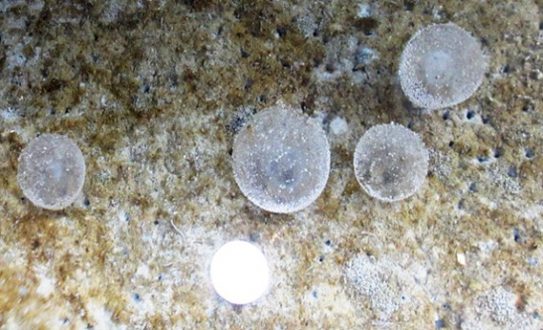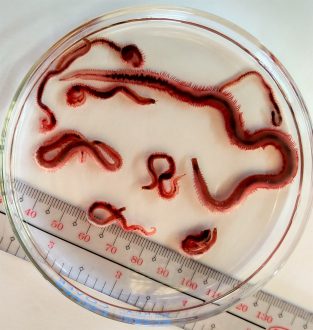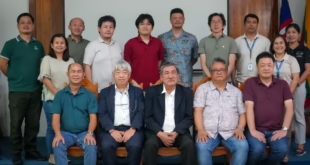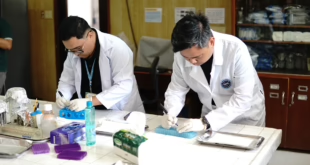The world is hungry for worms, marine worms. Every year, an estimated 121,000 tons of the tiny burrowers, called polychaetes, are dug up from ponds and mudflats to meet the demand for fishing bait and aquaculture feed.
In aquaculture, polychaetes are valued as aphrodisiacs for crabs and shrimp. Studies have shown that the worms are sources of essential fatty acids that boost the reproductive performance of crustacean broodstock. However, the polychates are potential carriers of disease, and feeding sensitive crustaceans with wild-sourced worms is a risky exercise.
At SEAFDEC/AQD, Associate Researcher Mary Anne Mandario is working on breeding and propagating the mudworm Marphysa iloiloensis, a new species of polychaete she discovered in 2019 and named after Iloilo province.

In a bid to produce more of this aquaculture superfood and as efficiently as possible, Mandario recently established the optimal light conditions for the polychaete hatchery where the mudworm eggs are hatched, and larvae are nursed.
What is the best brightness setting, and for how long? It turns out – zero. Nil. Nada. Just like their mud-burrowing parents, Marphysa iloiloensis eggs and larvae thrive in total darkness.
Polychaetes’ diverse behaviors
The finding is important because the 10,000 species of polychaetes have varying responses to light at their different life stages. For example, larvae of the reef-building polychaete Phragmatopoma lapidosa are first attracted to light, only to begin burrowing into the sediment at a later stage. In another polychaete, Hediste diadroma, the larvae’s affinity to light quickly turns to aversion, only within four days of hatching.
Iloilo mudworm’s love for darkness
As for Marphysa iloiloensis, eggs and larvae consistently loved darkness. Hatching rates declined with increasing light intensity and duration. Survival significantly decreased at a brightness of 157 μmol m−2 s−1 even if the exposure was just for 1 hour per day. At that brightness, only 84% of eggs hatched compared to 98% (total darkness and 3.4 μmol m−2 s−1) and 96% (64.4 μmol m−2 s−1) in other set-ups.

Similarly, the 29-day survival of larvae to juveniles was highest under total darkness (78%). At both 64.4 and 157 μmol m−2 s−1, mudworm did not survive a 6-hour per day exposure. On the other hand, as long as the polychaetes survived, growth was not affected by light intensity and duration.
While “no light or lower light intensity is the best culture condition from embryonic to juvenile stage of M. iloiloensis,” Mandario’s study also concludes that in these stages, 3.4 μmol m−2 s−1, or 250 lx, “can be considered as a threshold of light intensity to ensure high polychaete survival.”
The article “Interaction effect of light intensity and photoperiod on egg hatchability, survival and growth of polychaete Marphysa iloiloensis from larva to juvenile” by Mandario and her co-authors Nomae Joylyn Castor (SEAFDEC/AQD) and Vicente Balinas (University of the Philippines Visayas) was accepted in the journal Aquaculture on 26 August 2020 and may be requested at https://repository.seafdec.org.ph/handle/10862/5992. /RD DIANALA
 SEAFDEC/AQD Southeast Asian Fisheries Development Center | Aquaculture Department
SEAFDEC/AQD Southeast Asian Fisheries Development Center | Aquaculture Department



